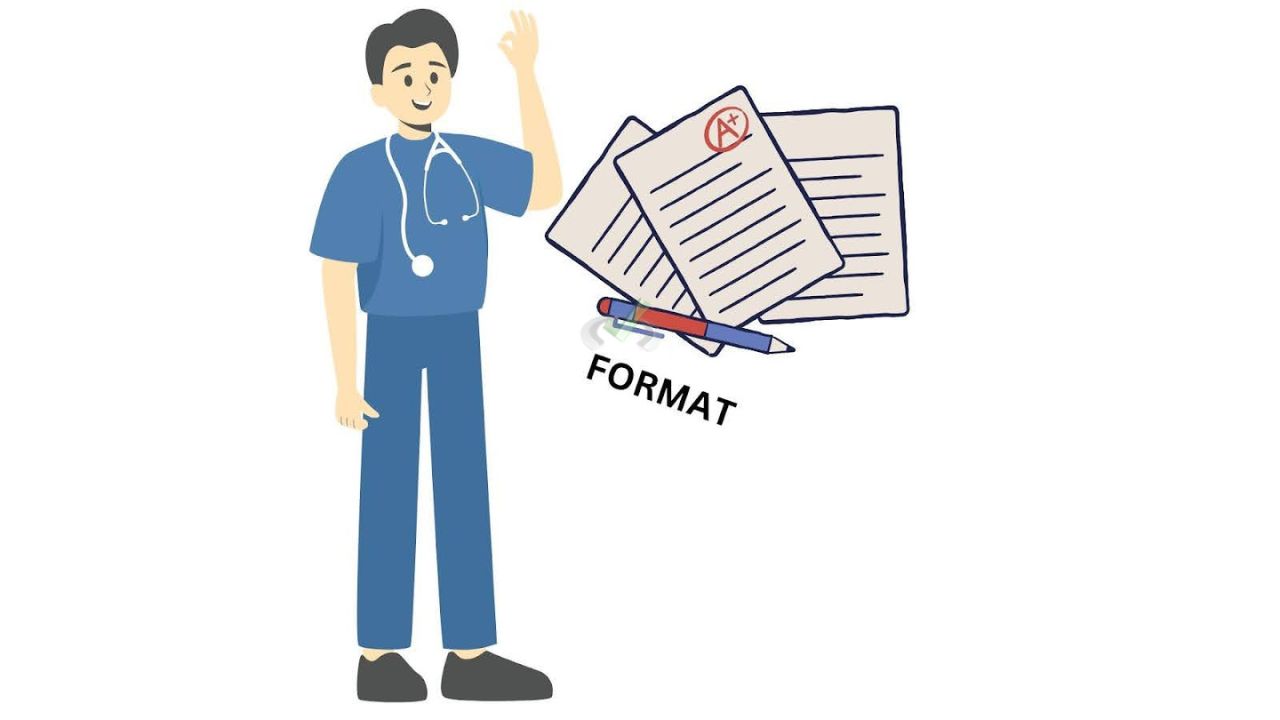
The NCLEX exam is changing. If you're preparing to take the NCLEX, you may be asking, "What is the new NCLEX format?" The changes to the exam are significant, but they don’t need to be a source of stress. Understanding how the new format works and how to study for it will help you tackle the exam with confidence.
In this article, we will explore what exactly has changed in the NCLEX format and how it impacts you as a test-taker. We will also provide tips on how to adapt your study strategies to fit the new structure. Let’s get into it!Understanding the New NCLEX Format: What’s Different?
If you’ve taken a glance at the NCLEX exam in the past, you might recall it being mostly a multiple-choice test. While multiple-choice questions are still part of the exam, the new NCLEX format is a whole different ballgame. The biggest shift lies in how it assesses your ability to make clinical decisions and think critically under pressure.
With the new NCLEX format, the test has become more focused on practical, real-world scenarios that require you to apply your knowledge in dynamic ways. Let’s take a look at the key changes.

Computer Adaptive Testing (CAT)
The new NCLEX format still utilizes Computer Adaptive Testing (CAT), but with a bit more flexibility. In the past, you could expect the exam to gradually increase in difficulty if you answered correctly, and decrease if you answered incorrectly.
That concept remains, but now, CAT can adjust more quickly. This means that it finds your level of competency faster and challenges you accordingly.
The result? A more personalized and accurate assessment of your abilities. For example, if you consistently answer questions correctly, you’ll be given harder questions that dig deeper into your knowledge.
On the other hand, if you miss several questions, the test will adjust to give you easier ones, helping to prevent you from being stuck in a section that’s too difficult. While this may seem intimidating, it’s actually great for you as it gives the test a better opportunity to assess your strengths and weaknesses.
Expanded Question Types
The NCLEX has expanded beyond simple multiple-choice questions. Get ready to see a variety of new question types designed to assess your skills more thoroughly.
These new question types will challenge your ability to apply knowledge in different ways. It’s no longer just about recognizing the correct answer but understanding how to apply your knowledge to complex clinical situations.
Greater Focus on Clinical Judgment
One of the most significant shifts in the new NCLEX format is the emphasis on clinical judgment. Rather than just memorizing facts, the exam now assesses how well you can apply your knowledge in real-world clinical situations.
Clinical judgment refers to your ability to assess a patient's needs, prioritize care, and make timely decisions about treatment.
This is a crucial skill for nurses, as real-world healthcare doesn’t always fit into a neat little box. Nurses must be able to make decisions quickly and accurately, and that’s exactly what the new NCLEX format aims to evaluate.
Incorporating Case Study Questions
With the rise of clinical judgment questions, the NCLEX now includes case study scenarios. These are situations you could potentially face on the job. You’ll be given a patient’s medical history and symptoms and asked to make decisions about how to proceed with treatment or care.
For example, a case study might present a patient with chest pain, and you’d need to assess the severity, decide on immediate interventions, and consider follow-up care—all based on the information provided.
These case studies are designed to test your ability to think on your feet and make decisions that prioritize patient safety and effective care.

What’s the Impact of the New NCLEX Format on Test-Takers?
The new NCLEX format has a few different implications for you as a test-taker. Although these changes might feel intimidating at first, they are designed to better reflect the real-world skills needed in nursing. Let’s explore how these changes will affect your NCLEX preparation and the exam itself.
Challenges of the New NCLEX Format
The challenges of the new NCLEX format can seem daunting, but understanding them will help you better prepare and approach the exam with confidence.
Benefits of the New NCLEX Format
The new format may seem challenging, but it also brings several advantages.
Navigating the New NCLEX Format: Tips for Success
If you’re wondering how to prepare for the new NCLEX format, don’t fret. There are several strategies you can use to make sure you're ready.
1. Master Clinical Judgment
Clinical judgment is the core of the new NCLEX format. You need to practice making decisions that prioritize patient safety and effective care. Here’s how you can work on this skill:
2. Practice with Case Studies
Case studies are a significant part of the new NCLEX format, and practicing these will help you feel more confident. Case studies mimic real-life clinical situations, and they test your ability to assess, prioritize, and intervene.
Look for NCLEX prep books or websites that offer case study practice. The more you practice these types of questions, the better you'll get at identifying key issues and making decisions quickly.3. Focus on Prioritization and Delegation
You’ll likely face questions that require you to prioritize patient care. Practice using frameworks like ABCs (airway, breathing, circulation) and Maslow’s hierarchy of needs to determine what’s most urgent.
Also, understand the rules of delegation and when to ask for help. For example, can a nurse’s aide take vital signs, or does the situation require a nurse’s full attention? Being able to delegate appropriately and prioritize effectively is key.
4. Don’t Forget Time Management
With the new NCLEX format, timing is everything. The exam’s adaptive nature means that you might face tougher questions as you progress. You’ll need to manage your time effectively to ensure you complete the exam. Practice taking timed exams, and get used to pacing yourself so that you don’t spend too much time on any one question.
5. Stay Calm and Focused
When the pressure is on, it’s easy to feel anxious. But remember, you’ve prepared for this. Trust your training and take deep breaths. If you come across a tough question, don’t panic. Move on and return to it later if you have time.
How to Prepare for the New NCLEX Format
There are several ways to ensure you're ready for the new NCLEX format.
Review Content Outlines
One of the first steps in preparing for the new NCLEX format is reviewing the content outlines. Both the NCLEX-RN and NCLEX-PN outlines provide a comprehensive guide to the topics covered in the exam.
These outlines break down each area you need to study, from pharmacology to patient care. Through using these outlines, you’ll ensure you’re not missing any important content. They also help you organize your study time efficiently, so you’re tackling the right areas each day.
Staying focused on these topics will give you a clear roadmap for success. Need a daily boost to stay on track? Subscribe to our NCLEX Daily Dose emails for quick tips and updates to keep your prep on point!Use Prep Courses
Online NCLEX prep courses are a great way to simulate the new NCLEX format and get used to the types of questions you’ll encounter. Many courses offer realistic practice exams that mimic the timing and difficulty level of the actual test.
Additionally, some courses focus on specific areas such as clinical judgment and case studies, which are crucial to the new format. These prep courses not only help you practice under timed conditions but also teach you strategies to handle the more complex question types.
Focus on Clinical Judgment and Critical Thinking
The new NCLEX format requires more than just memorization; it tests your ability to think critically and make clinical decisions in real-world scenarios. To prepare effectively, practice applying your knowledge to patient care situations.
Use practice questions that assess your clinical judgment—these will help you develop the critical thinking skills needed for the exam. When you regularly engage in these types of questions, you’ll be better equipped to handle case studies and prioritize care when faced with complex clinical scenarios on the exam.
Boost your prep with our NCLEX Cheatsheets! Download them now and access key facts and strategies to study smarter and ace your exam.
Final Thoughts on the New NCLEX Format
The new NCLEX format is designed to assess your readiness for the challenges of real-world nursing. The shift towards testing clinical judgment and prioritization, along with the inclusion of new question types, is meant to prepare you for what you’ll encounter on the job.
Embrace the changes, practice effectively, and trust that you have the skills to succeed. With the right mindset and preparation, you’ll be ready to face the new NCLEX format head-on and move forward in your nursing career.
